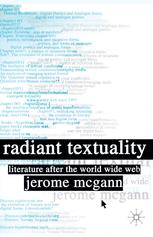

Most ebook files are in PDF format, so you can easily read them using various software such as Foxit Reader or directly on the Google Chrome browser.
Some ebook files are released by publishers in other formats such as .awz, .mobi, .epub, .fb2, etc. You may need to install specific software to read these formats on mobile/PC, such as Calibre.
Please read the tutorial at this link: https://ebookbell.com/faq
We offer FREE conversion to the popular formats you request; however, this may take some time. Therefore, right after payment, please email us, and we will try to provide the service as quickly as possible.
For some exceptional file formats or broken links (if any), please refrain from opening any disputes. Instead, email us first, and we will try to assist within a maximum of 6 hours.
EbookBell Team

4.4
32 reviewsThis book describes and explains the fundamental changes that are now taking place in the most traditional areas of humanities theory and method, scholarship and education. The changes flow from the re-examination of the very foundations of the humanities - its theories of textuality and communication - that are being forced by developments in information technology. A threshold was crossed during the last decade of the twentieth century with the emergence of the World Wide Web, which has (1) globalized access to computerized resources and information, and (2) made interface and computer graphics paramount concerns for work in digital culture. While these changes are well known, their consequences are not well understood, despite so much discussion by digital enthusiasts and digital doomsters alike. In reconsidering these matters, Radiant Textuality introduces some remarkable new proposals for integrating computerized tools into the central interpretative and critical activities of traditional humanities disciplines, and of literary studies in particular.